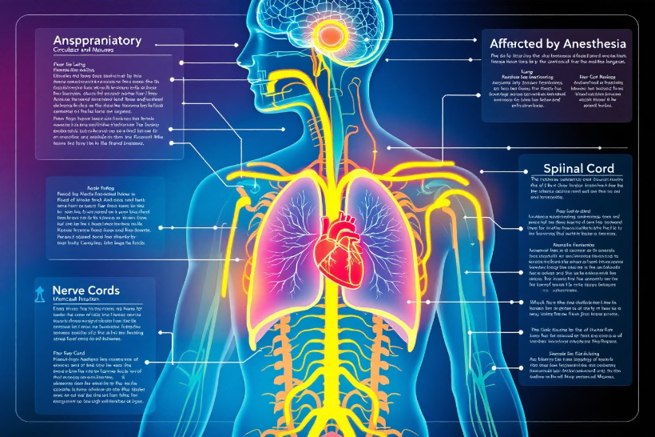Anesthesiology: The Art and Science of Perioperative Care
Anatomy and Physiology Relevant to Anesthesia
Pharmacology of Anesthetic Agents
Anesthesia Techniques: General, Regional, and Local
Pediatric Anesthesiology


ISF HealthTech Private Limited
"Empowering Lives Through Innovative Healthcare Solutions"
Anesthesiology is a dynamic medical specialty that blends advanced scientific knowledge with the skilled application of clinical judgment to ensure the safety and well-being of patients undergoing surgical, obstetric, and other medical procedures.
Anesthesiologists must have a comprehensive knowledge of human anatomy and physiology to safely administer anesthesia. This includes the cardiovascular, respiratory, nervous, and musculoskeletal systems, as well as the effects of anesthetic agents on these systems.
Continuous monitoring of vital signs, including heart rate, blood pressure, oxygen saturation, and end-tidal carbon dioxide, is crucial during anesthesia to detect and address any changes or complications.

Thorough review of the patient’s medical history, surgical history, and current symptoms to identify potential perioperative risks.
Ordering appropriate lab work, imaging, and other tests to assess the patient’s overall health status and organ function.
Ensuring that any underlying medical conditions, such as hypertension, diabetes, or pulmonary disease, are well-controlled prior to surgery.


Involves administering a combination of inhaled and intravenous agents to induce a deep, controlled state of unconsciousness, allowing for complete surgical relaxation and pain relief.
Targets specific nerve pathways to numb a defined region of the body, providing targeted pain relief without the need for a general anesthetic.
Involves injecting a local anesthetic agent directly into the surgical site, allowing for numbing of a small, localized area.
Thorough patient assessment, evaluation of comorbidities, and selection of appropriate anesthetic technique are crucial for successful surgical outcomes.
Continuous monitoring of vital signs, depth of anesthesia, and fluid/blood status allows for real-time adjustments during the procedure.
Careful management of pain, nausea, and other issues in the postoperative period is essential for a smooth recovery.


Quickly identify any intraoperative complications, such as changes in vital signs or unexpected events, and thoroughly assess the situation.
Take immediate action to stabilize the patient and address the underlying issue, utilizing appropriate anesthetic interventions and medications.
Continuously monitor the patient’s response and adjust the anesthetic plan accordingly. Maintain close communication with the surgical team.
If the complication is severe or unresponsive to initial interventions, be prepared to escalate care, including calling for additional support or transferring the patient to a higher level of care.
Utilizing a combination of analgesics, such as opioids, NSAIDs, and local anesthetics, to effectively manage postoperative pain.
Employing nerve blocks and other regional anesthesia methods to target pain at the source, reducing the need for systemic medications.
Empowering patients to self-administer pain medication, allowing for more personalized pain control and improved patient satisfaction.
Regularly evaluating pain levels using validated pain scales and adjusting the pain management plan accordingly.


Providing effective pain relief during labor and cesarean sections is a key focus, while ensuring the safety of both mother and child.
Obstetric anesthesiologists also play a vital role in managing postpartum complications and ensuring a smooth recovery for the new mother.

